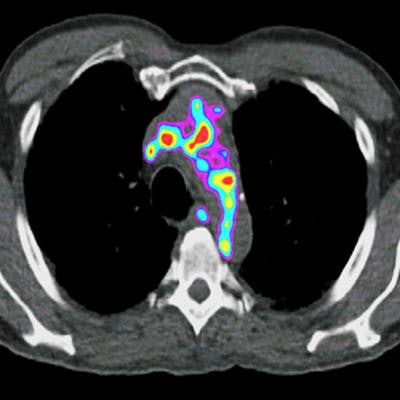
The U.S. National Institutes of Health (NIH) has awarded a $5.1 million grant to researchers at Mallinckrodt Institute of Radiology to develop PET-based imaging tools to distinguish vulnerable plaque in the body.
The Emerging Investigator Award will fund work by Yongjian Liu, PhD, associate professor of radiology, and colleagues at the Washington University School of Medicine in St. Louis for the next seven years to identify and treat vulnerable plaque. When vulnerable plaque breaks from an artery, it can block the flow of blood. If that incident occurs in the neck, for example, it can cause a stroke.
"The problem is that there's no way to predict the rupture of a plaque," Liu said in a statement. "We can tell that someone has plaque but not whether it increases the risk of a serious cardiovascular event like heart attack or stroke."
Plaque containing inflammatory cells and proteins is more likely to rupture, so the researchers are designing PET radiotracers to detect signs of inflammation within plaque. For this research, Liu plans to study mice with atherosclerosis and samples of blood vessels from people who have undergone plaque-removal surgery to assess whether the tracers can reliably detect vulnerable plaque.
 Atherosclerotic plaque shows up as colored regions in a PET scan of a human artery. Image courtesy of Yongjian Liu, PhD, and Washington University School of Medicine.
Atherosclerotic plaque shows up as colored regions in a PET scan of a human artery. Image courtesy of Yongjian Liu, PhD, and Washington University School of Medicine."The goal is really individualized, targeted treatment," Liu said. "Right now, we don't know who is at risk and even if we did, we can't deliver drugs precisely and efficiently. With imaging, we'll be able to identify vulnerable plaque, deliver treatment directly to it, and see whether the treatment is effective."




















